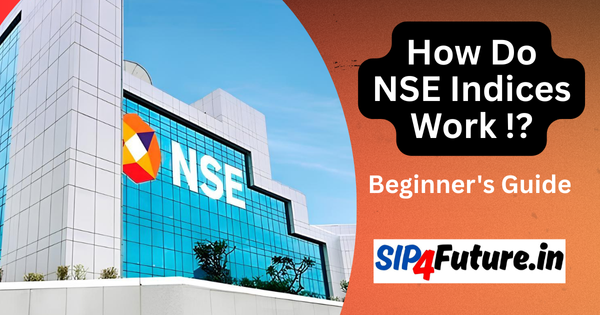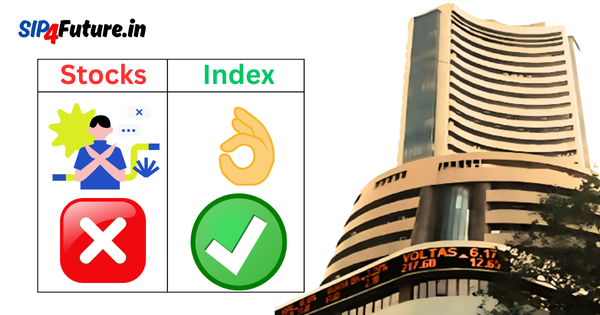The Indian stock market today delivered a robust performance on April 28, 2025, with the Nifty 50 and BSE Sensex climbing over 1% each, driven by strong sectoral contributions and standout stock performances. The Nifty 50 closed at 24,328.50, up 289.15 points or 1.20%, while the BSE Sensex ended at 80,218.37, gaining 1,005.84 points or 1.27%. This rally reflects growing investor confidence, bolstered by positive domestic cues and selective global market trends. However, a slightly negative market breadth, with 2,275 stocks declining against 2,055 advancing out of 4,330 traded, suggests mixed sentiment across the broader market.
This article dives into the key drivers of the Indian stock market’s performance, sectoral trends, standout stocks like Jayaswal Neco Industries and Tejas Networks, and the broader economic and global factors influencing the rally. We’ll also explore government policies, global market linkages, and future projections for key stocks.
What Drove the Indian Stock Market Rally?
Strong Sectoral Performance
The Indian stock market’s upbeat performance was led by robust gains in specific sectors. The Aerospace & Defense sector topped the charts with an average percentage change of 2.66%, fueled by rising defense budgets and government initiatives like Make in India. The Banking sector followed closely, posting a 1.66% gain, supported by improved asset quality and positive brokerage upgrades for banks like RBL Bank.
| Sector | Avg. % Change |
|---|---|
| Aerospace & Defense | 2.66% |
| Banks | 1.66% |
| Petroleum Products | 1.07% |
| Insurance | 1.06% |
| Engineering Services | 0.71% |
Key Stock Movements
Standout performers like Jayaswal Neco Industries surged 19.99% to ₹42.37, driven by a stellar Q4 net profit of ₹1.02 billion, a massive leap from ₹20.3 million the previous year. Conversely, Tejas Networks plummeted 12.93% to ₹747.85 after reporting a Q4FY25 net loss of ₹71.8 crore, compared to a ₹146.8 crore profit in Q4FY24.
Market Breadth Insights
Despite the headline gains, the market breadth leaned slightly negative:
| Category | Number of Scrips |
|---|---|
| Total Traded | 4,330 |
| Positive | 2,055 |
| Negative | 2,275 |
This divergence highlights selective buying in large-cap stocks, while mid- and small-cap segments faced profit-taking pressures, as noted in reports from Moneycontrol.
How Did Sectors Shape the Market’s Performance?
Top Performing Sectors
Aerospace & Defense: A Strategic Surge
The Aerospace & Defense sector’s 2.66% gain was underpinned by increased government spending on defense modernization. Initiatives like the Defence Acquisition Council’s approvals for new projects boosted investor confidence. Companies in this space benefited from long-term contracts and export opportunities, aligning with India’s push for self-reliance.
Banks: Resilience Amid Challenges
The Banking sector’s 1.66% rise was notable, with RBL Bank gaining 10.11% despite an 80% drop in Q4 net profit to ₹68.7 crore. Improved asset quality and brokerage upgrades, as reported by The Economic Times, fueled optimism. Public sector banks also saw gains, supported by the RBI’s positive outlook on credit growth.
Underperforming Sectors
Aviation: Turbulence in the Skies
The Aviation sector lagged with a -1.50% change, impacted by rising fuel costs and competitive pricing pressures. Global crude oil price volatility, as noted by CNBC TV18, weighed on airline stocks, with jet fuel costs squeezing margins.
Media: A Muted Performance
The Media sector’s -0.41% decline reflected cautious advertiser spending amid economic uncertainties. Digital media companies faced challenges from reduced ad budgets, as highlighted in The Hindu BusinessLine.
| Underperforming Sector | Avg. % Change |
|---|---|
| Aviation | -1.50% |
| Media | -0.41% |
| Transport Services | -0.38% |
| Telecom | -0.33% |
| Information Technology | -0.29% |
When Did Key Stocks Make Waves?
Jayaswal Neco Industries: A Stellar Q4
Jayaswal Neco Industries’ 19.99% surge was a highlight of the Indian stock market’s performance. The company’s Q4 results, announced on April 28, 2025, showed a net profit of ₹1.02 billion, driven by strong demand in its steel and castings business. Revenue rose to ₹16.75 billion from ₹14.11 billion year-over-year, as per BSE filings. This performance reflects the company’s strategic focus on high-margin products and operational efficiency.
RBL Bank: Defying Profit Dips
RBL Bank’s 10.11% gain to ₹207.10 came despite an 80.5% drop in Q4 net profit to ₹68.7 crore, as reported by Moneycontrol. The bank’s improved asset quality and lower provisioning costs signaled resilience, prompting brokerages to raise target prices. This aligns with the broader banking sector’s recovery, supported by RBI’s monetary policies.
Tejas Networks: A Costly Setback
Tejas Networks’ 12.93% decline followed a Q4FY25 net loss of ₹71.8 crore, attributed to increased R&D investments and one-time charges. The company’s revenue grew to ₹19 billion from ₹13.2 billion, but profitability concerns dominated investor sentiment, as noted in The Hindu BusinessLine.
Associated Alcohols & Breweries: Profit Pressures
Associated Alcohols & Breweries fell 11.98% to ₹1,133.90 after reporting a Q4 net profit of ₹223 million, down from ₹814 million. Rising input costs and regulatory changes in the liquor industry, as discussed on NSE updates, contributed to the decline.
What Role Did Government Policies Play?
Defense and Infrastructure Push
Government initiatives significantly influenced the Indian stock market’s sectoral performance. The Ministry of Defence’s increased budget allocation for 2025-26, focusing on indigenous manufacturing, directly boosted Aerospace & Defense stocks. Policies like the Production Linked Incentive (PLI) scheme also supported engineering and manufacturing firms, indirectly aiding companies like Jayaswal Neco.
Banking Sector Reforms
The RBI’s efforts to strengthen banking sector resilience through stricter asset quality norms and digital banking initiatives underpinned the sector’s 1.66% gain. Measures like the Digital India program enhanced transaction volumes, benefiting banks like RBL Bank.
Challenges for Aviation and Telecom
The Aviation sector faced headwinds from high fuel costs, exacerbated by the government’s limited intervention in aviation turbine fuel (ATF) pricing. Similarly, the Telecom sector’s -0.33% performance was linked to ongoing regulatory pressures and spectrum auction costs, as outlined in TRAI reports.
How Did Global Markets Influence the Rally?
Global Market Context
The Indian stock market’s performance was partly influenced by global trends. While U.S. markets like the Nasdaq and S&P 500 faced volatility due to tech sector corrections, as reported by The Economic Times, India’s market benefited from selective FII inflows. The BSE Sensex’s rally was supported by optimism in Asian markets, particularly in Japan, following positive U.S.-Japan trade talks.
Crude Oil and Commodity Prices
Rising crude oil prices, driven by U.S. sanctions on Iran and OPEC cuts, as noted by Groww, pressured Aviation and Transport Services sectors. Conversely, Petroleum Products gained 1.07%, with companies like Reliance Industries benefiting from higher refining margins.
Currency and Trade Dynamics
The Indian rupee’s stability against the U.S. dollar, supported by RBI interventions, provided a favorable backdrop for the Indian stock market. However, global trade tensions, including U.S. tariffs on China, introduced volatility, impacting export-oriented sectors like IT and Telecom.
What Lies Ahead for Key Stocks?
Future Targets and Analyst Insights
Analysts remain optimistic about the Indian stock market’s trajectory, particularly for standout performers. Below are future target prices and historical returns for key stocks, based on brokerage reports from Moneycontrol and The Economic Times:
| Stock | Brokerage | Target Price (₹) | Historical Returns (1 Year) |
|---|---|---|---|
| Jayaswal Neco Industries | Anand Rathi | 50 | 45.23% |
| RBL Bank | Motilal Oswal | 240 | 12.67% |
| Tejas Networks | ICICI Securities | 680 | -8.45% |
| Associated Alcohols | Sharekhan | 1,050 | 22.14% |
Jayaswal Neco Industries
Anand Rathi’s ₹50 target reflects confidence in the company’s steel sector growth, driven by infrastructure demand. Its 45.23% one-year return underscores its multibagger potential.
RBL Bank
Motilal Oswal’s ₹240 target is based on RBL Bank’s improving loan book and digital banking initiatives. Its 12.67% annual return indicates steady growth.
Tejas Networks
ICICI Securities’ ₹680 target suggests a cautious outlook due to R&D costs. The stock’s -8.45% return reflects recent challenges but long-term 5G potential.
Associated Alcohols
Sharekhan’s ₹1,050 target accounts for recovery in liquor demand. The stock’s 22.14% return highlights its resilience despite Q4 setbacks.
Broader Market Outlook
The Indian stock market is expected to remain range-bound, with the Nifty 50 likely to test 24,500, as per SBI Securities. Support levels at 23,800 provide a cushion against geopolitical risks, while IT and Banking sectors may continue to drive gains.
Conclusion
The Indian stock market’s strong performance on April 28, 2025, underscores its resilience amid global uncertainties. Aerospace & Defense and Banking sectors led the charge, while Aviation and Media faced challenges. Standout stocks like Jayaswal Neco Industries and RBL Bank highlighted the market’s selective strength, despite a slightly negative breadth. Government policies, global market trends, and sectoral dynamics will continue to shape the market’s trajectory. Investors should stay vigilant, balancing opportunities in high-growth sectors with risks in underperforming ones.
Disclaimer: The information provided in this article is for educational purposes only and should not be considered financial advice. Investing in the stock market involves risks, and individuals should conduct their own research or consult a financial advisor before making investment decisions.




